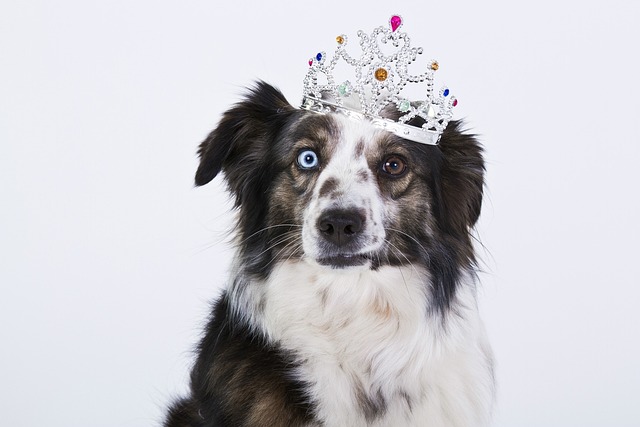
Are CBD treats good for dogs
It’s a stormy night in your Chicago apartment, and your rescue Lab, Max, is pacing—paws clicking on the hardwood, tail tucked, whimpering every time thunder booms.
That little brown bottle of saline solution sits in many medicine cabinets – handy for contacts, minor cuts, or stuffy noses. Spotting your dog shaking his head or scratching an ear, it’s tempting to reach for this familiar, seemingly gentle fluid. It is just salt water, after all. Seems harmless, maybe even helpful? The short answer is yes, you can technically use plain sterile saline to flush debris from your dog’s outer ear canal in a pinch. But should you rely on it as your go-to dog ear cleaning solution? That’s where the picture gets murkier, and understanding canine ear health becomes crucial.
Let’s be clear: sterile saline solution itself isn’t toxic or inherently dangerous for a dog’s external ear. If your pup just rolled in dusty sand and you see visible grit near the ear opening, gently flushing with warmed saline can help dislodge superficial debris. Think of it as a mild rinse for the visible parts. However, the ear canal is far more complex than what meets the eye. It’s a long, L-shaped tunnel, warm and dark – an environment where bacteria and yeast naturally exist. Disrupting the delicate balance here is surprisingly easy.
This is where saline falls short as a dedicated dog ear cleaning solution. Its primary limitation? Saline lacks any active ingredients designed to combat microbes, break down waxy buildup effectively, or maintain the ear canal’s slightly acidic pH balance – a natural defense mechanism crucial for canine ear health. Using saline might move debris around, but it doesn’t treat underlying issues or create an environment hostile to problematic organisms. Imagine just rinsing a dirty dish with plain water; some grime comes off, but grease and bacteria remain. It’s a similar principle.
 Furthermore, introducing any liquid deep into the ear canal carries risk if not done correctly. Vigorous flushing can force debris and moisture further down towards the eardrum, potentially causing damage or creating a perfect, damp breeding ground for infection (otitis externa). This is why proper dog ear cleaning technique is paramount, regardless of the solution used. Never insert cotton swabs deep into the canal – this packs wax and debris inward and risks perforating the eardrum. Instead, soak a cotton ball or gauze pad with the cleaning solution, gently wipe the easily accessible parts of the outer ear and the entrance to the canal, and let your dog shake his head to expel loosened material. Always follow your veterinarian’s specific instructions.
Furthermore, introducing any liquid deep into the ear canal carries risk if not done correctly. Vigorous flushing can force debris and moisture further down towards the eardrum, potentially causing damage or creating a perfect, damp breeding ground for infection (otitis externa). This is why proper dog ear cleaning technique is paramount, regardless of the solution used. Never insert cotton swabs deep into the canal – this packs wax and debris inward and risks perforating the eardrum. Instead, soak a cotton ball or gauze pad with the cleaning solution, gently wipe the easily accessible parts of the outer ear and the entrance to the canal, and let your dog shake his head to expel loosened material. Always follow your veterinarian’s specific instructions.
Speaking of infections, they’re incredibly common. Studies suggest otitis externa affects roughly 20% of dogs at some point. Symptoms like head shaking, scratching, redness, odor, or unusual discharge signal it’s time to skip the home remedies and consult your vet. Attempting to clean an infected ear yourself with saline (or even an over-the-counter cleaner) can worsen the situation. Veterinarians possess the tools (like otoscopes) to see deep into the canal, diagnose the specific cause (bacteria, yeast, mites?), and prescribe targeted medicated ear cleaners and treatments. In many regions across the US and EU, dispensing prescription ear medications requires a valid veterinary-client-patient relationship, underscoring the importance of professional diagnosis.
Breed plays a significant role too. Dogs with floppy ears (Cocker Spaniels, Basset Hounds), hairy ear canals (Poodles, Schnauzers), or narrow canals (Shar-Peis) are far more prone to ear problems. Their ear anatomy restricts airflow and traps moisture. For these breeds, a consistent, vet-approved ear cleaning routine using appropriate products is often part of essential dog health maintenance, far more effective than occasional saline flushes. Regular grooming involving plucking excess hair from the ear canal (done gently by a professional or trained owner) can also be vital preventative care.
What about over-the-counter options? The pet care aisle is packed with dog ear cleaning products. Look for solutions specifically formulated by reputable companies. These often contain gentle drying agents (like salicylic acid), antimicrobials, and cerumenolytic agents designed to safely break down wax without disrupting the natural pH balance. Avoid products with harsh alcohols, hydrogen peroxide, or strong fragrances, as these can be irritating or damaging. When selecting a cleaner, consider your dog's specific needs – some are formulated for routine maintenance, others for waxier ears, and specific medicated ones for infections (only under vet guidance).
So, where does that leave our saline solution? It’s not poison, but it’s not a powerhouse either. Think of it as a very occasional, superficial rinse only for visibly dirty outer ears, perhaps after a particularly messy adventure. It should never replace a proper vet-recommended ear cleaner for routine maintenance, and it’s utterly insufficient for addressing any sign of infection or discomfort. Crucially, before starting any new ear care regimen, especially if your dog has a history of ear issues, consult your veterinarian. They can recommend the safest, most effective dog ear cleaning solution and technique tailored to your individual dog, considering breed, lifestyle, and any existing health conditions. Responsible pet ownership means knowing when the simple, familiar fix isn't the best fix for your furry friend's complex needs. When in doubt about those ears, swab it out… straight to your vet’s office.

It’s a stormy night in your Chicago apartment, and your rescue Lab, Max, is pacing—paws clicking on the hardwood, tail tucked, whimpering every time thunder booms.

You’re huddled by the whelping box in your Atlanta home, staring at a litter of squirming, pink newborns—their mom, a nervous Golden Retriever

That little brown bottle of saline solution sits in many medicine cabinets – handy for contacts, minor cuts, or stuffy noses. Spotting your dog shaking his head or scratching an ear, it’s tempting to reach for this familiar, seemingly gentle fluid.

Coming home to a shredded couch cushion and a quivering pup by the door—sound familiar? For new dog owners in Chicago high-rises or suburban Atlanta homes

If your floor looks like a fur carpet and your clothes are constantly covered in dog hair, you’re not alone. Excessive shedding is a common concern for dog owners, but there are effective ways to manage it.

You’ve just finished a sunny hike with your 45-pound Golden Retriever, Bailey, through Arizona’s Red Rock Canyon. As he collapses panting in your SUV